Reducing accounts receivable days is essential for the success of any medical practice. AR days measure the average time it takes for a claim to be paid, based on the average daily charge volume. This metric varies depending on the type of care and medical specialty, with a suggested standard being fewer than 40 days.
Tracking accounts receivable efficiently is a challenging task, but decreasing the number of AR days significantly enhances practice productivity. Automation has become increasingly popular, offering higher profitability, fewer errors, and greater productivity. Healthcare providers consider automation essential to meet evolving regulations and the demand for cost-effective solutions.
Key Tasks in Medical Billing That Can Be Automated:
Claim Submissions: Automated systems streamline the entire claim submission process from data entry to electronic submission. These systems minimize the need for manual intervention by electronically submitting claims to payers. This ultimately speeds up payment and reduces the likelihood of errors that could lead to claim rejections.
Coding Accuracy checks: Automation tools equipped with advanced algorithms verify coding accuracy in real time. These tools cross-check procedures, and diagnosis codes and review and validate medical codes to prevent discrepancies. This reduces the risk of expensive billing errors and guarantees compliance with coding standards.
Patient Eligibility Checks: Automated eligibility verification tools quickly assess a patient’s insurance coverage and instantly verify patient insurance details. This prevents issues related to inaccurate or outdated insurance information.
ICD Code Addition: Automated systems enhance accuracy and timeliness in billing, reducing patient anxiety and confusion. Improved communication about billing issues enhances the overall patient experience and builds trust between patients and healthcare providers.
Factors Affecting AR
Understanding the common factors that contribute to increased AR days can help you address them quickly and enhance efficiency. These factors include:
- Claim Filing Delays: Slow processing times from initial filing to submission can inflate AR days.
- Incorrect Coding: Medical coding errors may result in the denial or rejection of claims.
- Data Entry Errors: Errors in patient or billing data entry can cause the billing process to take longer or become more difficult.
- Ineffective Eligibility Determination: Inadequate verification of patient insurance coverage can result in rejected claims.
- Increased Claim Rejections and Denials: Frequent rejections and an inefficient appeals process can extend AR days significantly.
- Credentialing Delays: Delays in provider credentialing can prevent billing altogether.
- Incorrect Posting Process: Errors in the financial posting process can lead to discrepancies and delays in account settlements.
Challenges in AR Management
Many AR management processes in medical practices remain outdated, failing to incorporate advanced automation tools. For example, managing a practice management system with thousands of medical claims and identifying which claims require more attention and which ones need less is a highly complex manual process. Assigning an AR manager becomes challenging as it is crucial to align their responsibilities with the workflow needs of your practice. Such challenges can reduce the efficiency of AR management and obstruct revenue collection efforts.
How Automation is Reshaping Medical Billing Workflows
The integration of automation in medical billing workflows is revolutionizing the healthcare industry:
- Reducing Administrative Burden: By doing away with time-consuming and repetitive operations, medical billing automation lowers administrative workload and frees up healthcare staff to concentrate on more strategic and patient-centered work.
- Minimizing Billing Errors: Another major benefit of automation is the reduction of billing errors. Automated systems perform detailed accuracy checks, ensuring claims are error-free and codes are applied correctly. “This process assists in ensuring a smoother revenue cycle and prevents any potential claim rejections.”
- Generating Accurate Invoices: Automated invoicing ensures accuracy and consistency by eliminating manual calculations and reducing data entry errors. This builds trust with patients and healthcare providers through enhanced reliability and transparency.
- Providing Data and Analysis: Healthcare providers may now make proactive financial decisions by using automation to analyze vast volumes of administrative data in real time.
- Improving Patient Satisfaction: A seamless and accurate billing process positively impacts patient satisfaction. Automated systems facilitate accurate and timely billing, reducing patient anxiety and confusion. Improved communication regarding billing matters enhances patient satisfaction in general and builds patient-provider confidence.
- Reducing Costs: Automation in healthcare companies reduces costs, minimizes errors, streamlines processes, and increases productivity. This leads to improved accessibility to healthcare services and enhances financial stability.
- Minimizing Roadblocks: Automation simplifies medical billing workflows, making them more efficient, transparent, and predictable for healthcare organizations.
Learn how Pain Management Group Revenue Leaps by 30% with Streamlined Claims Filing.
Conclusion
Automation is becoming more important in medical billing as technology advances. Automation’s transformative effect goes far beyond process optimization. It influences patient satisfaction and cost structures while freeing up medical staff to concentrate on delivering superior patient care. Collaborating with third-party providers like Jindal Healthcare can automate medical billing and coding. This helps improve healthcare services and streamlines the billing process.







